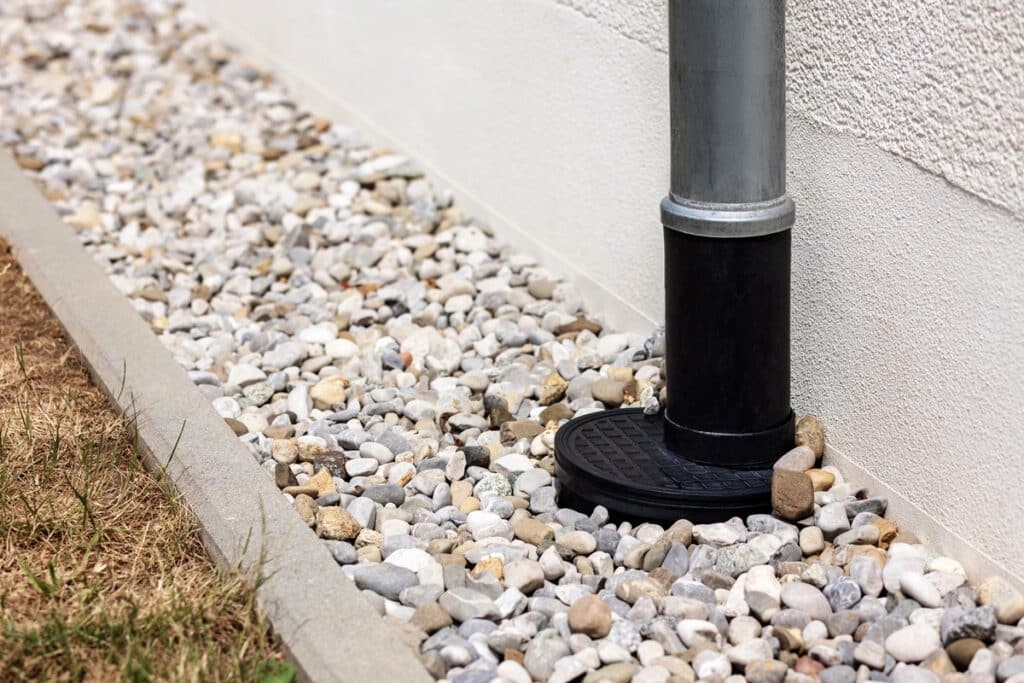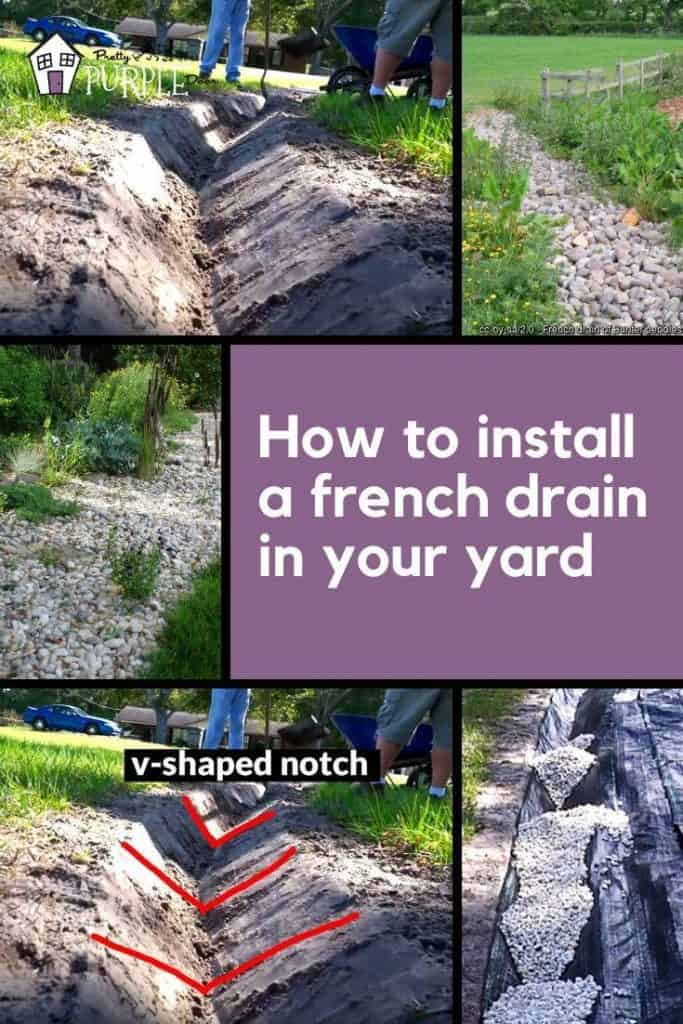The Necessary Guide to Preserving Your French Drain for Durable Efficiency
Preserving your French drain is vital to its performance and your residential property's defense. Routine checks can conserve you from costly repair work and water damages. You'll need to know what indicators to search for and exactly how usually to inspect your system. Plus, understanding the cleansing procedure can make a significant difference. Let's explore the crucial steps for ensuring your drain works well for several years ahead.
Comprehending the Function of a French Drain
A French drainpipe is an essential component in handling water around your home. It guides excess water far from your foundation, stopping flooding and damage. When hefty rainfall falls, the drain accumulates water via a perforated pipeline hidden in gravel. This system permits water to stream freely, lowering stress on your basement wall surfaces and minimizing the risk of leaks.You may wonder exactly how it operates in practice. As water fills the dirt, gravity draws it toward the drainpipe. The perforated pipeline captures this water, delivering it to an assigned drainage area or tornado drain. This procedure maintains your lawn dry and shields your home's structural integrity.Understanding just how a French drainpipe functions is key to appreciating its importance. By successfully carrying water away, it aids keep a dry and secure living setting. Keeping your French drainpipe in leading condition warranties you prevent pricey repair services down the line.
Regular Examinations: What to Try to find
Begin by examining for any obstructions that could be obstructing water flow when you're inspecting your French drain. Pay interest to indicators of surface area disintegration around the drainpipe, as this can indicate potential problems. Routine analyses will certainly aid maintain your drainage system functioning successfully.
Obstructed Drain Assessment
Exactly how can you inform if your French drainpipe is clogged? Watch for water merging in your backyard, especially after heavy rainfall. If you notice areas where water accumulates rather than draining, that's a red flag. You ought to likewise examine the drain outlet; if water isn't spurting as it should, there's most likely a clog. Pay attention for uncommon gurgling noises, which can show trapped air. Additionally, check the drain's surface area for any kind of vegetation development, as origins can penetrate and obstruct the system. Ultimately, if you scent moldy odors, it could indicate stagnant water brought on by an obstruction. Regularly examining these indicators can assist you keep your French drain effectively and stop expensive repair work.
Surface Area Erosion Check

Cleansing Your French Drain: Step-by-Step Guide
Cleansing your French drainpipe is crucial for keeping it working appropriately. You'll need some certain devices and a clear procedure to guarantee whatever runs efficiently. Let's go through the actions and suggestions for preserving your drain efficiently.
Tools You'll Require
To deal with the task of cleansing your French drainpipe properly, you'll intend to collect a few vital devices. Initially, get hold of a sturdy set of gloves to protect your hands from particles and sharp things. A little shovel or trowel will help you get rid of dust or blockages around the drainpipe. For getting rid of out the inside, a plumbing's serpent or a high-pressure water nozzle can be exceptionally valuable. You'll additionally need a bucket for gathering any type of particles you pull out. Lastly, having a yard hose pipe accessible will make it much easier to rinse out the drainpipe and ensure it's streaming smoothly. With these devices all set, you'll be established for a thorough cleaning session!
Cleaning Up Process Actions
Beginning by reviewing the location around your French drain for any noticeable particles or blockages. Get rid of fallen leaves, branches, or dirt that may block water flow. Next off, inspect the inlet and outlet locations; clear any type of obstructions to assure correct drain. Use a yard hose pipe to flush the drainpipe, guiding water into the inlet. This aids remove any kind of collected sludge or sediment. Take into consideration utilizing a plumbing's serpent to break them up if you notice consistent obstructions. After cleansing, examine the crushed rock around the drain; restore it if it's removed. Validate the drain covers are undamaged and securely in location to protect against debris from getting in. Regular cleaning maintains your French drain working properly.
Maintenance Regularity Tips
While normal upkeep is necessary for your French drain's durability, recognizing how typically to keep it can make all the difference. Preferably, you must inspect your French drain a minimum of two times a year, ideally in springtime and fall. After heavy rains or snowmelt, look for clogs or particles. If you notice any type of standing water, it's time to cleanse your drain.In locations with hefty vegetation, even more frequent maintenance-- regarding every three months-- might be essential. In addition, consider cleaning your French drain after major storms or if you observe water pooling in your lawn. By staying positive, you'll assure your French drainpipe features properly and protects your residential or commercial property from water damage. Regular checks will save you time and money in the long run.
Identifying Common Issues and Their Solutions
It's vital to recognize usual concerns with your French drainpipe and apply reliable options when you observe water merging in your backyard or damp areas in your basement. One constant issue is blocking, commonly created by particles like fallen leaves or sediment. To fix this, you can make use of a pipes snake or a high-pressure water jet to clear blockages.Another issue could be inappropriate slope. Water will not stream away from your home if your drain isn't sloped appropriately. You can change the slope by excavating and repositioning the drain pipe.Lastly, look for damage or splits in the drainpipe itself. Changing the damaged sections is crucial for peak performance if you locate any kind of. By resolving these concerns immediately, you'll help assure that your French drain remains to work effectively, securing your property from water damages and preserving a completely dry, safe setting.
Seasonal Maintenance Tips for Your French Drainpipe
Dealing with usual issues with your French drainpipe is just the initial step in ensuring its long-term efficiency. Seasonal maintenance is crucial for peak performance. In the springtime, clear away leaves and debris that might have built up throughout winter months. Look for any kind of blockages in the electrical outlet or capture basin, as water requires a clear path to stream freely.During summer season, inspect your drainpipe for any kind of signs of resolving or shifting soil. Ensure it's still degree and operating properly. As autumn techniques, clear out any fallen delegates stop obstructions prior to winter season arrives.In winter season, expect freezing temperature levels. Make sure your drainpipe isn't at danger of cold if you live in a chilly climate. Insulating exposed pipelines can help. Routine checks and timely upkeep can prevent expensive repair services and keep your French drain functioning properly year-round. Keep proactive and take pleasure in assurance knowing your drainage system is in good condition!
When to Hire an Expert
Recognizing when to employ a specialist can save you time and protect against additional damages to your French drainpipe. If you notice relentless standing water in your yard, it's a clear sign that your drainpipe may be blocked or harmed. Do not disregard unusual smells, as they can suggest sewer back-up or degeneration, which needs prompt attention.If you find that your drain isn't functioning appropriately after efforts to tidy or maintain it, it's time to connect for specialist aid. Additionally, if you're uncertain regarding the underlying concerns or lack the essential devices, hiring a professional can offer peace of mind.Finally, if your French drain is old or has experienced significant wear and tear, professional analysis can establish whether repair work or complete replacement is required. Depend on the professionals to guarantee your drainage system functions successfully for many years to find.
Tips for Stopping Future Drainage Troubles
To keep your French drainpipe see this website working effectively, regularly evaluating Web Site and preserving it can make all the distinction. Begin by clearing particles, leaves, and dust from the surface area and drain openings. This protects against clogs that can bring about water backup. Check the gravel around the drainpipe; if it's compressed or eroded, consider adding fresh crushed rock to maintain ideal flow.Next, draw away water far from your drainpipe by guaranteeing rain gutters and downspouts are clear and routing water at least three feet far from your foundation. Frequently check for any signs of damages or sagging. If you observe issues, resolve them immediately.Finally, think about installing a filter or a catch container to trap bigger debris prior to it goes into the drainpipe. By remaining proactive with these tips, you'll reduce the threat of future drainage problems and keep your French drainpipe in leading form.
Regularly Asked Concerns
The length of time Does a French Drainpipe Commonly Last?
A French drainpipe typically lasts around 30 to 40 years, depending on the products made use of and upkeep (Portland French Drain). If you maintain up with normal checks, you can extend its lifespan even further
Can I Set Up a French Drainpipe Myself?
Yes, you can mount a French drain yourself if you have actually got the right devices and knowledge. Just make certain to prepare meticulously, comply with local regulations, and guarantee appropriate drainage to avoid future concerns.
What Materials Are Used in a French Drainpipe?
You'll need perforated pipeline, gravel, landscape material, and a solid water drainage pipeline for your French drain. These products aid reroute water effectively, stopping flooding and keeping your home dry and safe from water damage.

Is a License Required to Set Up a French Drainpipe?
You'll likely require a permit to set up a French drain, depending on local regulations. Get in touch with your community to assure you comply with any type of needed standards and prevent potential problems throughout installment.
What Are the Expenses Associated With French Drain Maintenance?
Maintaining a French drain usually sets you back in between $100 and $500 annually. You'll require to consider expenses for cleansing, fixings, and evaluations. Normal maintenance aids stop larger expenses and guarantees your system operates effectively for several years - Portland French Drain. When you're inspecting your French drainpipe, start by examining for any clogs that could be blocking water circulation. By remaining positive, you'll guarantee your French drainpipe functions go now properly and protects your property from water damage. When you observe water merging in your backyard or damp areas in your cellar, it's crucial to determine common issues with your French drain and apply reliable options. You can readjust the slope by digging and rearranging the drainpipe pipe.Lastly, check for damages or splits in the drain itself. Examine the crushed rock around the drain; if it's compressed or worn down, consider including fresh gravel to maintain optimal flow.Next, divert water away from your drain by guaranteeing downspouts and seamless gutters are clear and directing water at the very least 3 feet away from your foundation